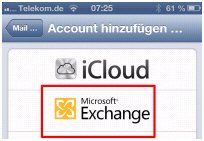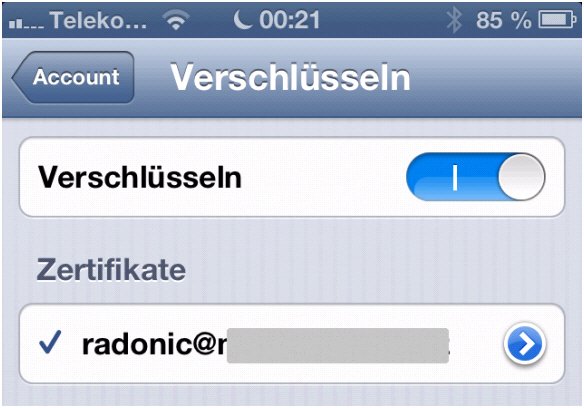Apps for mobile devices which groupware manufacturers or software suppliers provide for unified communications have the advantage, that they can exploit the vast range of functions of these systems to a large extent. Besides, the separation of private and business mails increases the safety, if business apps offer respective management options (e.g. within the scope of MAM).
Selection of the Mobile Clients
On the other hand, users often prefer the integrated applications of smartphones and tablets, because they know them well, and usually they are more user-friendly. Not all application areas require an increased safety level, e.g. if a messaging system is applied by a hosting company to offer a mail service for private users.
CommuniGate Pro as a system for unified communications offers both options for the connection to mobile devices. Besides native clients ("Apps") for Android and iOS a synchronisation mechanism is available ensuring an automated alignment of mails, dates and contacts between server and smartphones.
ActiveSync in the Scope of Delivery of CommuniGate Pro
If a new date is entered within the groupware, a mail will be received, or in case of a change of a contact, the respective data set is transferred within seconds to the new end device "OTA (Over The Air), thus a manual alignment is omitted.
This convenience is ensured by ActiveSync, which is provided for free by CommuniGate Pro, which originates from Microsoft. Thanks to its large popularity, nearly all modern smartphones support this protocol so that a multitude of mobile devices get wireless access to the groupware data without any additional infrastructure.
Great Support from Mobile Devices
This includes devices with iPhone, Android, Windows Mobile and Symbian (with Mail for Exchange or RoadSync). Blackberry mobiles can be made transparent via the optionally available AstraSync Client and be aligned without a BES (Blackberry Enterprise Server) via the ActiveSync protocol. Based upon the implementation of the respective mobile operating system, also tasks and appointment invitations are exchanged besides mails, appointments and contacts.
The synchronization, described by CommuniGate Pro as AirSync can be installed on an iPhone with iOS 6 as follows:
1. Create new mail account of the Microsoft Exchange-type
2. Enter registration information: Name of the CommuniGate server, username and password
3. Finally select the applications mail, contacts, dates or reminders (i.e. tasks), whose data have to be synchronized.
When the connection is realized, the calendar within the CommuniGate Pro-account as well as the contacts including the contact groups appear, based upon the setting in the Calendar App. Furthermore, a new mail account is available. The latter can be configured on demand for signing and encoding through S/MIME.
Encoding through S/MIME
The integration and use of S/MIME is carried out analogously to normal mail accounts which are used without ActiveSync:
1. The certificate X.509 is needed, together with the private key as PKCS#12 file (.p12 oder .pfx). It is sent to each other by mail.
2. Open the attachment on the iPhone and accept the certificate for a new profile
3. After that, S/MIME can be activated in the mail account settings, and the wanted certificate can be selected.
The AirSync functionality is an inherent part of CommuniGate Pro and automatically active. The data exchange takes place via http, accordingly the ports for http/https outward-communication must be open.
Simple MDM Included
During the administration of AirSync by the administrator, some basic functions for the Mobile Device Management are available.
Thus, he can globally grant or deny the permission for each user to use this feature (by default, synchronisation is enabled), as well as allow or limit the approval for certain devices via their device ID. For each user mailbox the Admin can decide if this synchronisation shall be included or not.
The admin can enforce that mobile devices are secured by a PIN. Through Remote Wipe he is capable of deleting smart phone contents if the device was lost or stolen.




